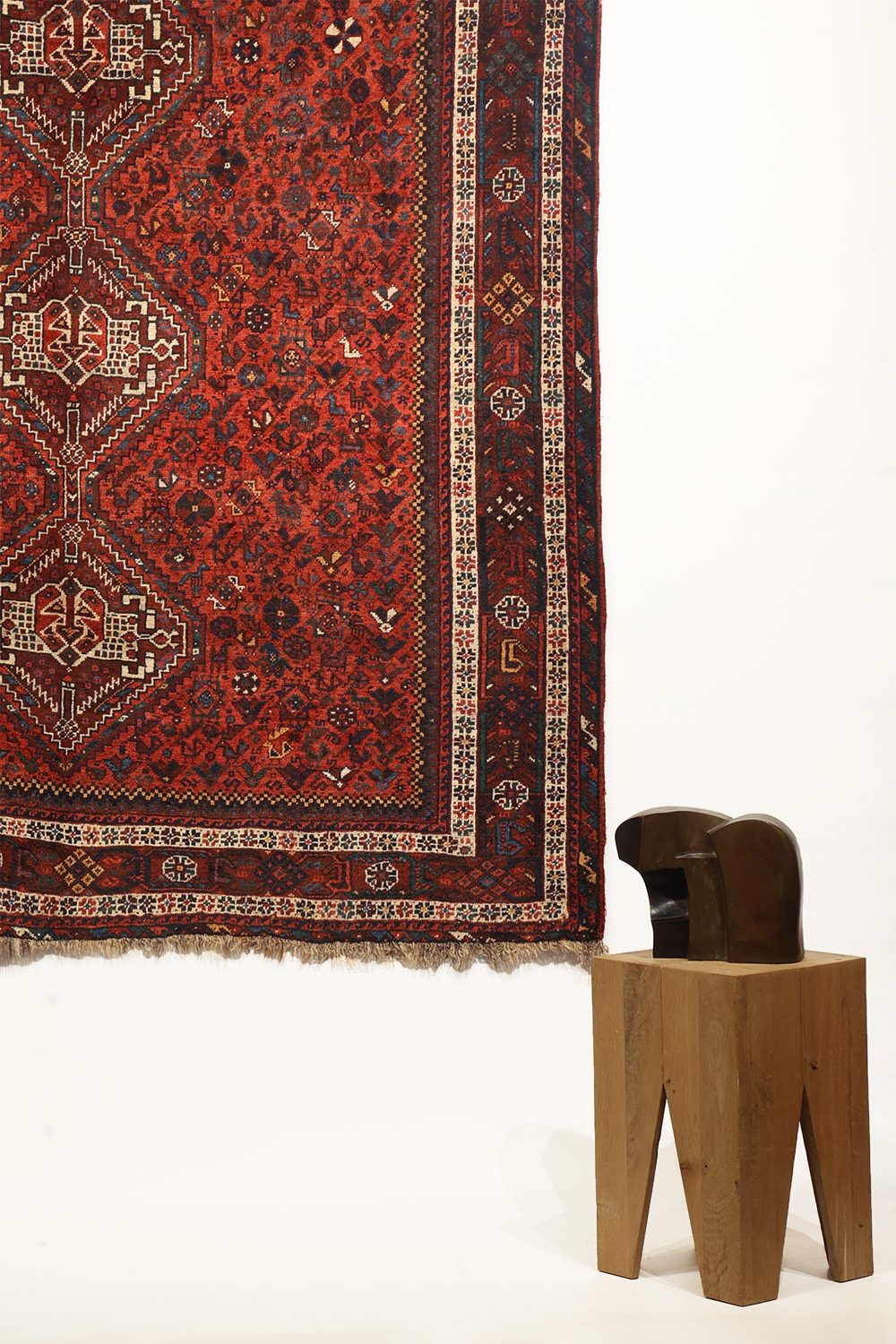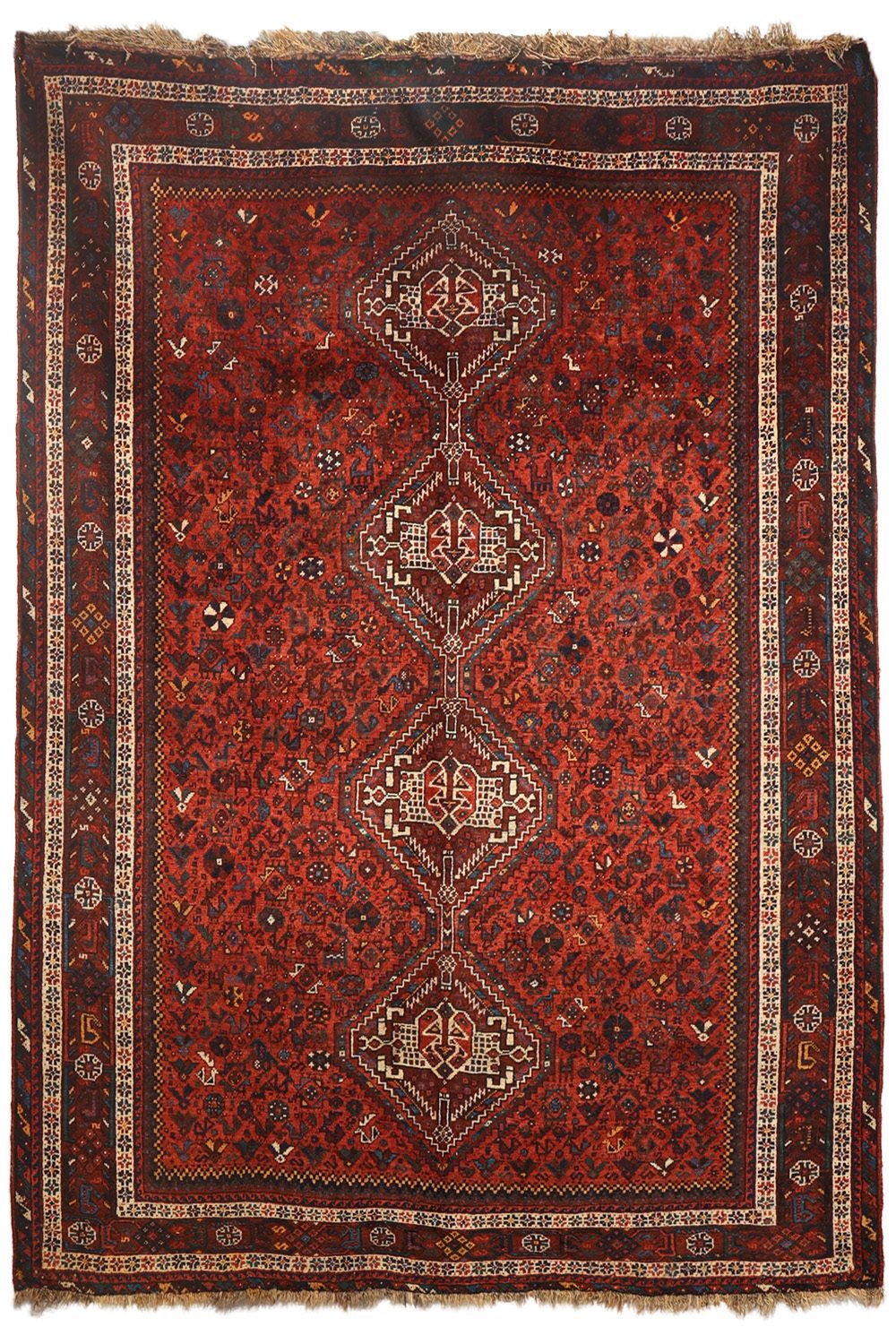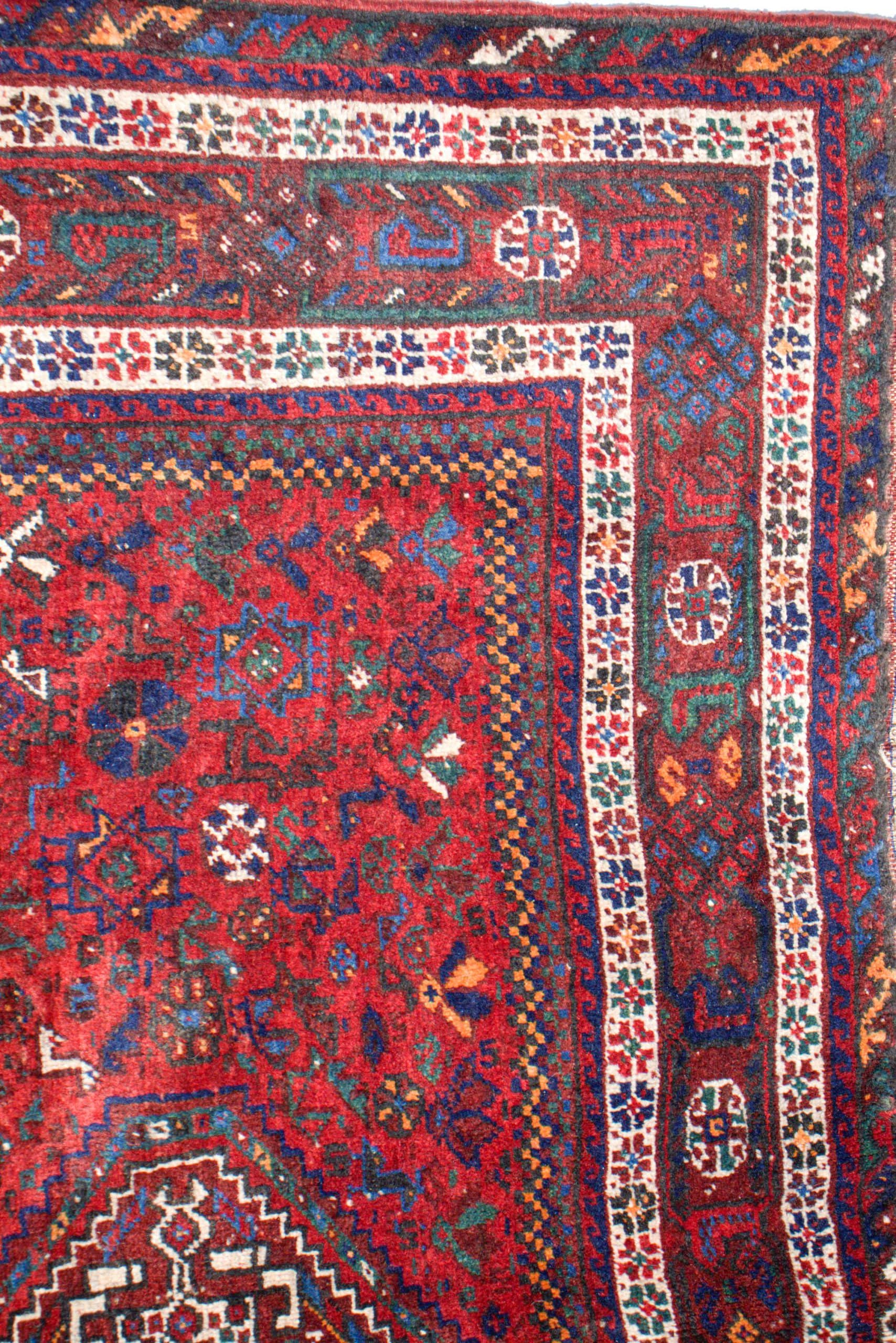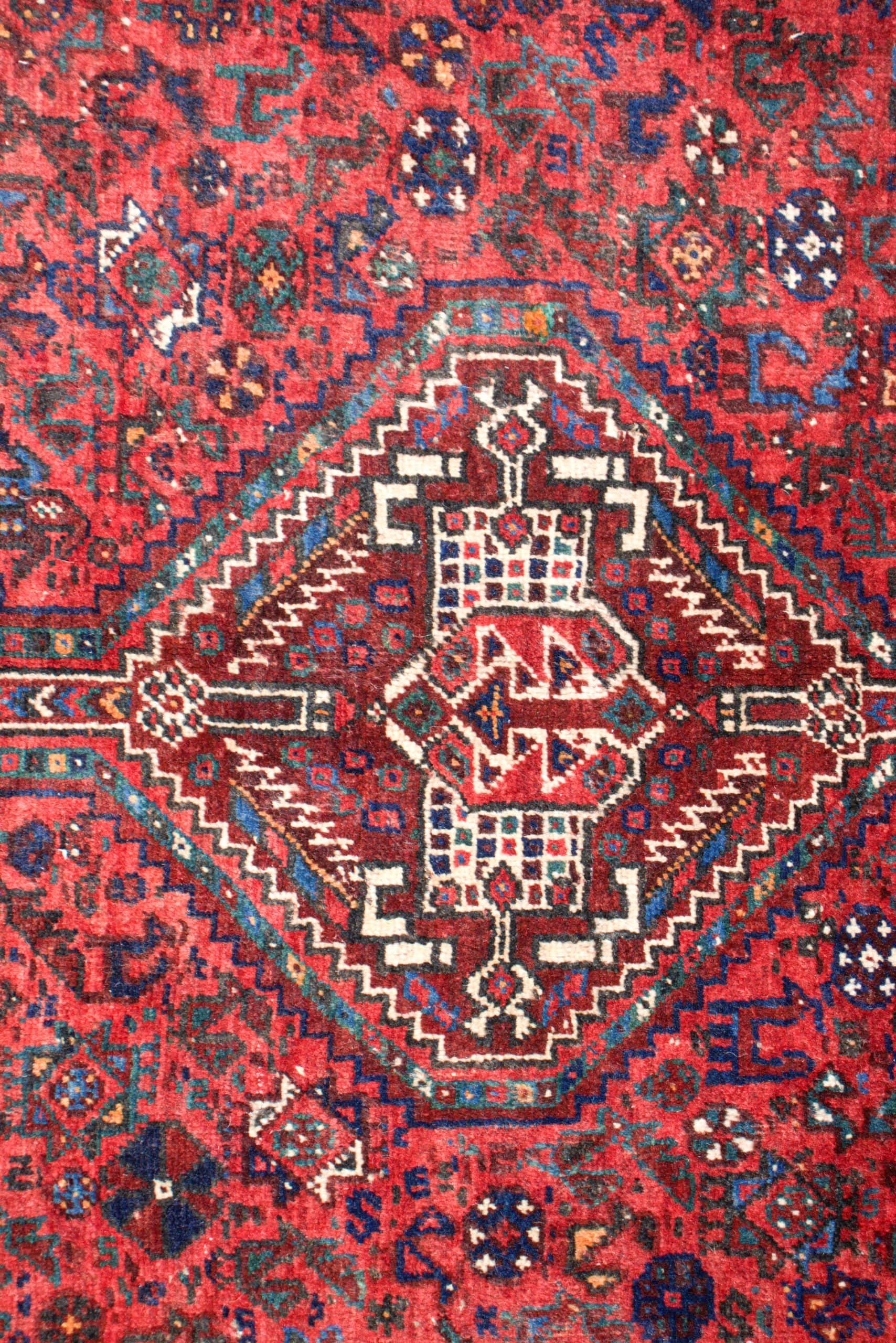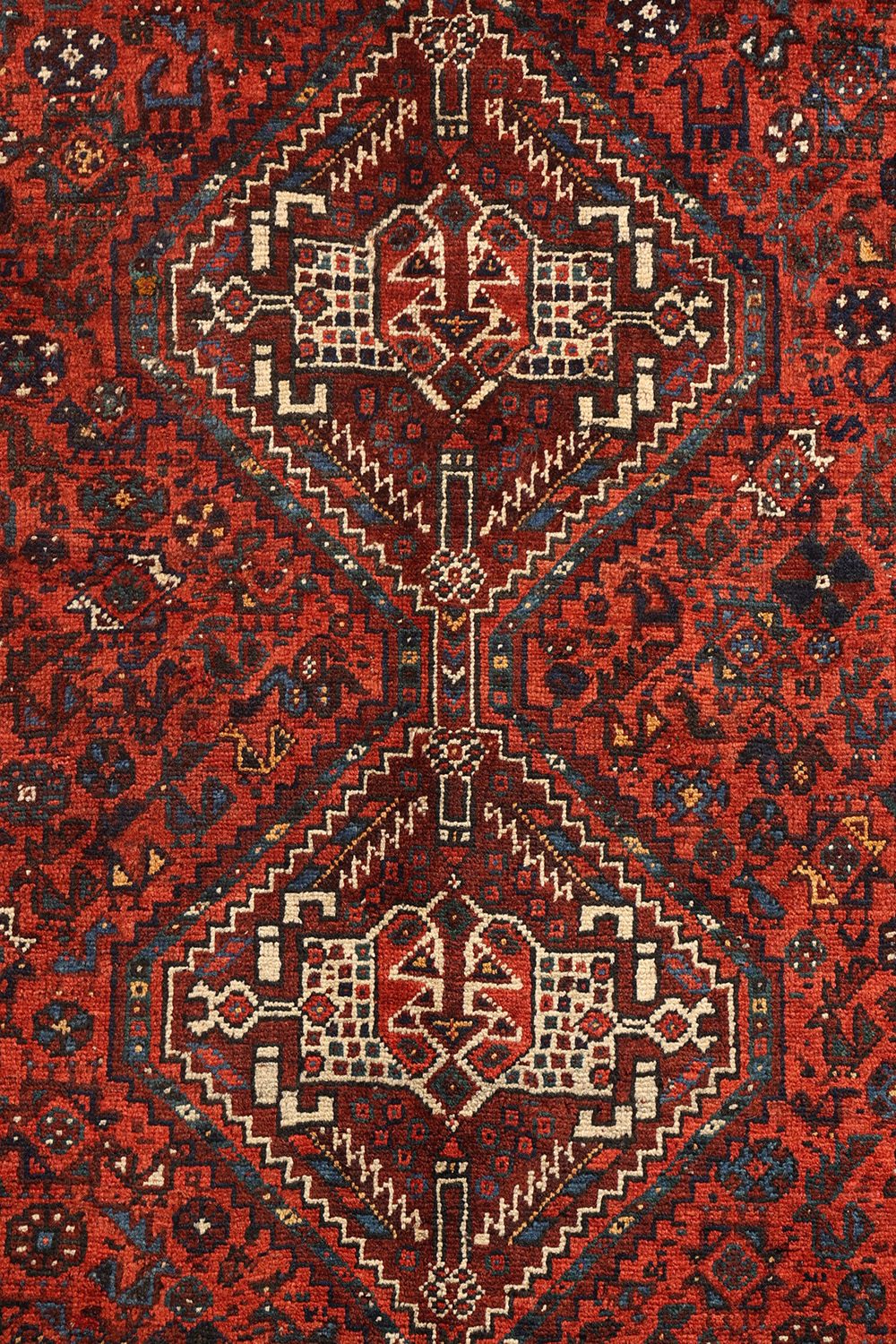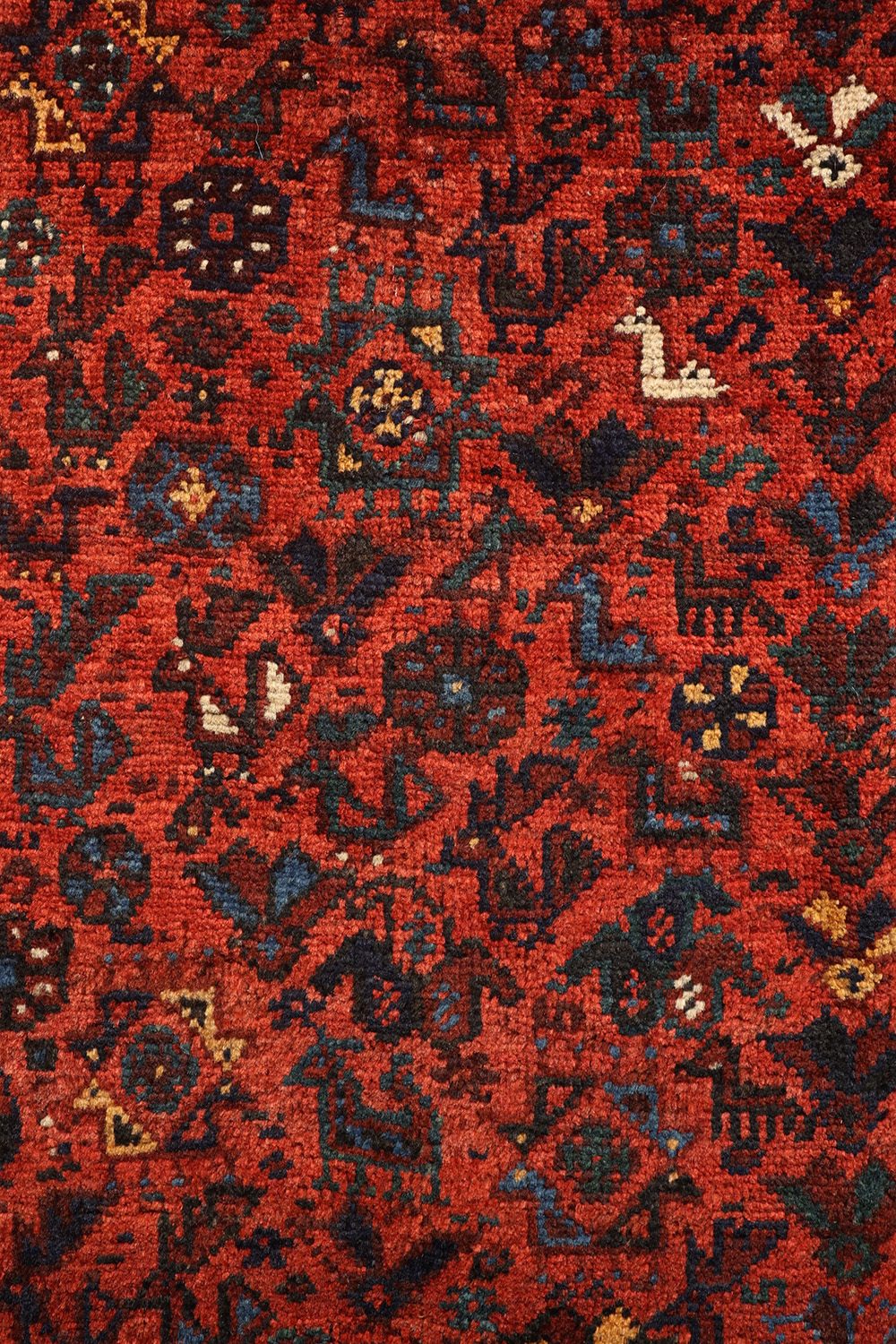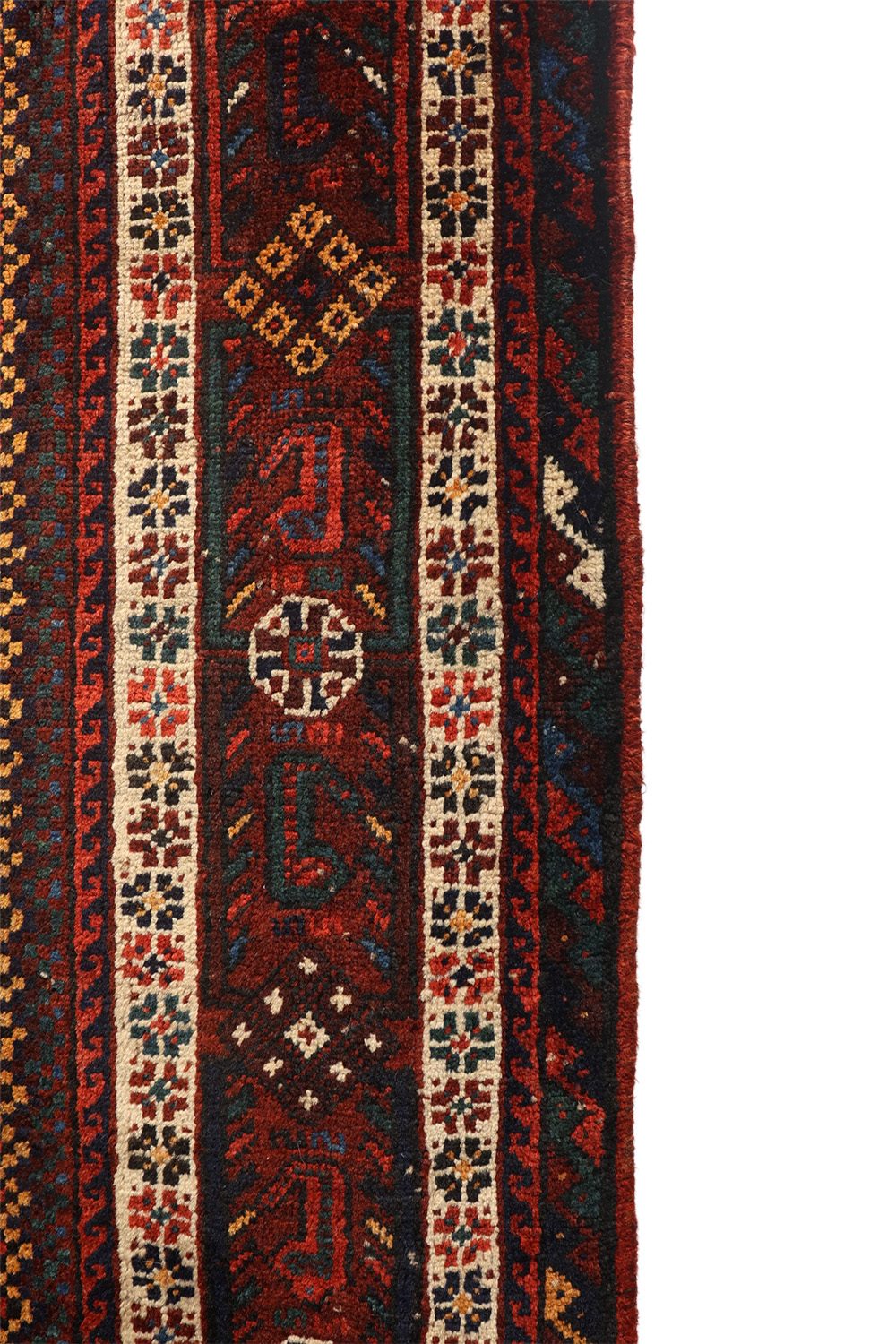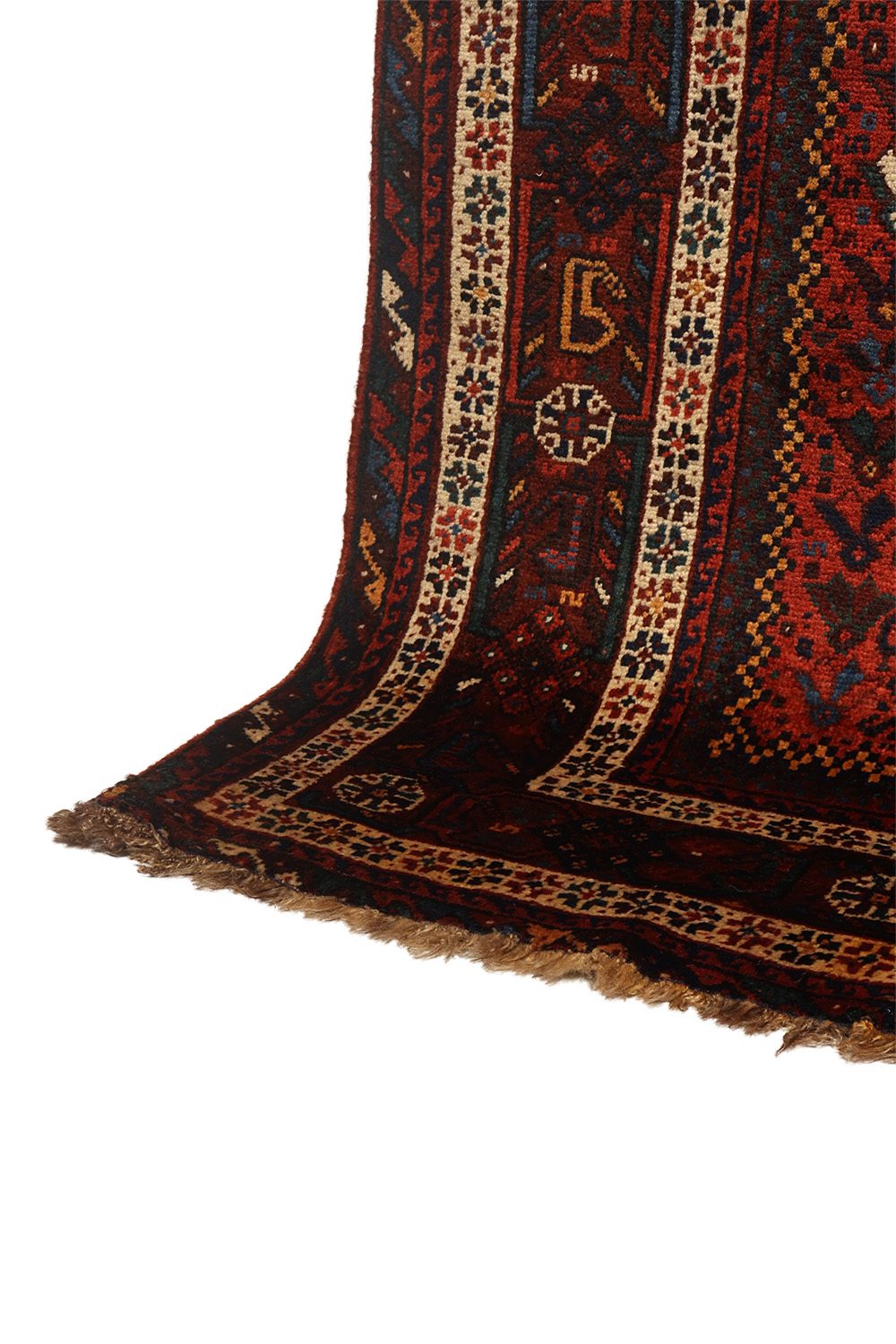3,250.00 €
Exceptional example of an antique carpet from the Khamseh tribes of Iran, evoking a Persian garden or Paradise. Despite the age of the rug, it retains its long pile, indicating that it was a precious object to its owner and was probably used on a few occasions. This rug has decades of life ahead of it, perhaps another century.
The central field has a classic design made up of four medallions, but this rug is distinguished from others like it by the unusual square designs within the medallions. In addition, the central field is full of plant motifs (flowers, shrubs, trees), geometric figures, birds, and animals with two heads, apparently woven all the motifs randomly. The border is also exceptional, with an interesting sequence of different geometric patterns and boteh motifs.
The depth of colors obtained naturally in this rug is a clear example of the superiority of the best vegetable dyes over synthetic ones. This Khamseh tribe rug is an excellent representative of the finest antique tribal rugs.
We adquired this exceptional antique rug from the private collection of a rug merchant in Shiraz, Iran. It was not part of his shop inventory but rather held in his family’s home, suggesting it was considered a prized possession.
One of three nearly identical pieces, this rug may have originally been woven as part of a dowry or as a gift within a tribal community. It is likely that it remained within the same nomadic family for generations before being sold to the merchant or his family, who preserved it for many years. During the period from the 1960s to the 1980s, many nomadic groups in Iran began to settle and often sold their rugs during this transition.
Shiraz has a long-standing tradition of rug merchants who both commissioned and collected pieces from surrounding tribal groups. It’s also possible that this rug was originally made for a settled family home in Shiraz, where it would have been carefully looked after and passed down through generations.
While its full journey is difficult to trace, the fact that all three matching pieces remained together for so long is a strong indicator of their value and the care they received over time.
Material: 100% hand-spun sheep wool
Size: 230×170 cms cms
Origin: Arab Khamseh tribe, Iran
Date: 1850-1975
The Arab nomads of Fars Province, Iran, descend from certain Arab tribes of Najd, Yammaneh, and Omman who migrated in the 7th and 8th centuries after the Arab strife (AD 640) and the advent of Islam. They speak a mixture of Arabic and Persian.
Although the carpet production of the Arab nomads encompasses a bewildering variety of designs, with principal patterns much more varied than those of other Fars tribes, the adherence of Arab weavers to a generally dark and sober palette has denied them recognition. artistic they deserve.
Material: 100% hand-spun sheep wool
Size: 230×170 cms cms
Origin: Arab Khamseh tribe, Iran
Date: 1850-1975
1 in stock
Additional information
| Weight | 11.9 kg |
|---|
Subscribe and receive the lastest news
